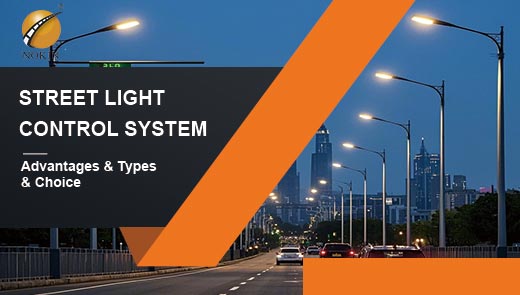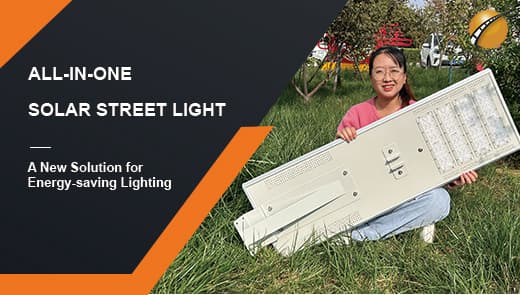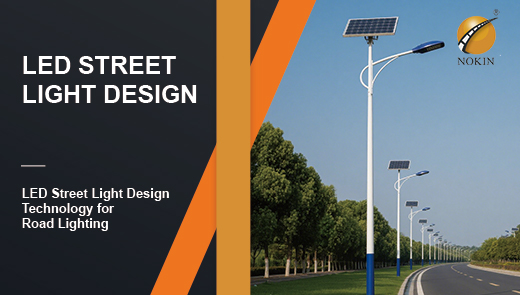Reasons Why Solar Street Lights Are Not Charging Well
As an environmentally friendly and energy-saving lighting facility, solar street lights are widely used in urban roads, country trails and other places. However, sometimes we encounter poor charging of solar street lights, which not only affects the normal lighting function of street lights, but also reduces the efficiency of energy utilization. Next, we will delve into this issue and provide you with a comprehensive solution.

How To Check If Solar Panel is Charging Battery?
Determining whether the solar panel is charging the batteries can start from a simple observation of the appearance. Many solar street light systems are equipped with a battery indicator, green light is always on, which generally means that the battery is charging and has enough power; if the indicator is red, it may mean that the battery power is low, and you need to further check whether it is charging normally.
The use of professional tools to test is more accurate. Multimeter is a common tool, the multimeter will be adjusted to DC voltage, the pen connected to the battery positive and negative poles, if the reading gradually rise, indicating that the solar panel is charging the battery. If the voltage does not change or the reading is abnormal, there may be charging problems. When measuring the current, you need to connect the multimeter in series in the charging circuit, and under normal circumstances there will be a certain value of charging current display.
Analysis of the Reasons for Poor Charging of Solar Street Lights
Solar panel related problems
Dirty solar panel surface is a common problem. Dust, leaves, bird droppings, etc. cover the solar panel, blocking light irradiation, reducing the light energy absorbed by the solar panel, thus reducing the power generation efficiency. Solar panels should be cleaned regularly to keep the surface clean.
Incorrect orientation of the solar panel can also seriously affect the charging effect. When installing the solar panel, you need to adjust the orientation of the solar panel according to the local geographic location and the sun's trajectory to ensure that it can receive the maximum amount of light. Otherwise, even if there is enough light, it will not be able to charge effectively due to the poor reception angle.
With the growth of the use of time, solar panels will appear aging phenomenon, the performance of the internal photovoltaic cells decline, and the efficiency of converting light energy into electricity decreases. In addition, improper operation or external impact during transportation and installation may cause the solar panel to be damaged, cracked, broken, etc., resulting in poor charging, at which time the solar panel needs to be replaced in a timely manner.
Battery Problems
Battery aging is an important cause of poor charging. After many cycles of charging and discharging, the activity of the chemicals inside the battery decreases, and the ability to store electricity gradually decreases. For example, lead-acid batteries, after 2-3 years of use, the capacity may be significantly reduced, making it difficult to fully charge.
Battery mismatch also affects charging. If the battery capacity is too small, can not meet the street lamps at night for a long time lighting electricity needs, even if the solar panel normal charging, may be due to the battery capacity limitations, so that the street lamp lighting time is shortened.
Loose or corroded battery connection lines will increase circuit resistance and hinder current transmission, resulting in poor charging. The connection lines should be checked regularly to ensure a firm connection, and the corroded parts should be cleaned or the lines should be replaced.
Environmental factors
Long-term cloudy and rainy weather is the “big enemy” of solar street light charging. Insufficient light, the solar panel can not produce enough electricity to charge the battery, resulting in shorter lighting time or reduced brightness of the street light. In rainy areas, consider increasing the area of solar panels or equipping auxiliary power supply.
Surrounded by tall buildings or trees blocking the sunlight, so that the amount of light received by the solar panel is reduced, which will also result in poor charging. When installing the street light, you should choose a reasonable location, avoid the shade, and ensure that the solar panel can get enough light all day long.
Controller Failure
Incorrect setting of controller parameters can interfere with the charging process. For example, if the overcharge protection voltage is set too low, the battery will stop charging before it is fully charged; the charging current is set unreasonably, which affects the charging speed and effect. It is necessary to set the controller correctly according to the street light system and battery parameters.
Controller hardware damage may also occur, such as internal electronic components burned, short-circuit, etc., resulting in the inability to properly regulate charging. At this time, it is necessary to replace the new controller to restore the normal charging function of the street light.
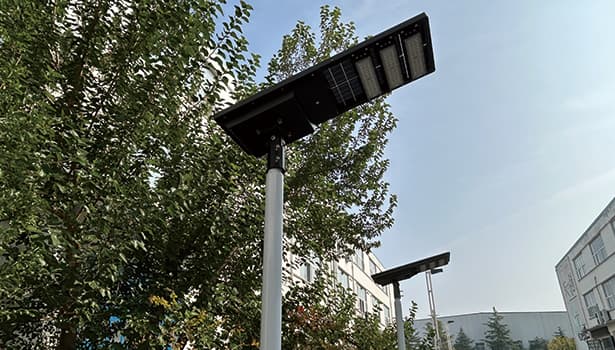
Solutions for Poor Charging of Solar Street Light
For Solar Panel Problems
Clean the solar panel regularly by wiping it with a clean soft cloth and water, avoiding the use of sharp tools to scratch the surface. It is recommended to clean it at least once a month, and increase the cleaning frequency in dusty or heavily polluted areas.
Adjust the solar panel facing direction, determine the due south direction (northern hemisphere) by compass, and adjust the tilt angle according to the local latitude. In general, a tilt angle equal to the local latitude will allow the solar panel to receive the most light during the year. After installation, periodically check the orientation for shifts in orientation.
For aging or damaged solar panels, promptly replace them with solar panels of the same model or with better performance. When replacing, take care to connect the wiring correctly to ensure that the new solar panel works properly.
For battery problems
When the battery is aging, you should choose a suitable new battery for replacement. For example, lithium batteries have a longer life and higher energy density than lead-acid batteries, which can be selected according to actual needs and budget. After replacement, carry out the first deep charging and discharging of the new battery to activate the battery performance.
Check the battery connection lines, tighten the loose joints, clean the corroded parts, you can use sandpaper to polish the rusty places, apply conductive paste and reconnect. If the line is seriously damaged, you need to replace the connection cable with a new one.
Responding to environmental factors
Before installing the solar powered street light, conduct light assessment of the installation location and choose an open and unobstructed location. If shading cannot be avoided, extend the bracket and raise the installation height so that the solar panels can avoid the shading.
In cloudy and rainy areas, auxiliary lighting equipment can be added, such as an emergency lighting device connected to the utility, or equipped with a backup power source, such as a small diesel generator, to provide temporary illumination when the solar street light is low on power.
For controller failure
According to the solar street light system manual, reset the controller parameters. After setting, observe the charging situation to ensure that the parameters are set correctly. If you are not sure how to set, contact the manufacturer's technical support.
When the controller hardware is damaged, purchase the same type of controller for replacement. During the replacement process, pay attention to the power-off operation to avoid the danger of electric shock, and connect the lines according to the instructions to ensure that the controller works properly.
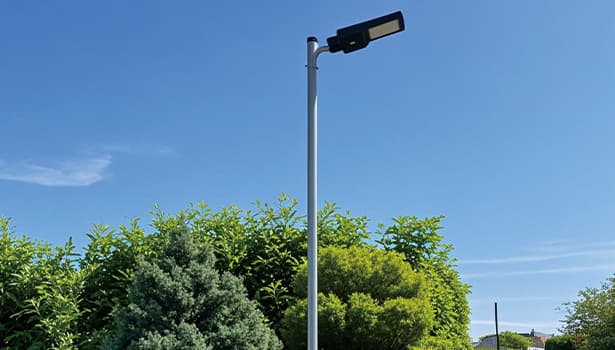
How to Charge Solar Street Lights Without Sun?
In some special circumstances, such as continuous rainy days, or when the solar powered street lights are in urgent need of use but the power is insufficient, it is particularly important to master the method of charging solar lights in the absence of sunlight.
Charging with external power supply
Charging treasure:
Charging treasure is a convenient and common external charging device. When choosing a rechargeable treasure, you need to pay attention to its output voltage and current parameters. Generally speaking, the input voltage of most solar lights is 5V, so you need to select a charging treasure with an output voltage of 5V to ensure that the voltage matches and avoid damage to the solar light due to too high or too low voltage. When connecting, use a USB adapter cable that is compatible with the charging port of the solar light, one end of which is plugged into the USB output port of the rechargeable battery, and the other end is connected to the charging port of the solar light. After the connection is completed, the rechargeable power bank will automatically charge the solar light, during the charging process, you can observe the charging indicator light of the solar light to determine the charging status. Usually, it takes about 1 - 2 hours to fully charge a 10000 mAh rechargeable battery with moderate capacity, depending on the capacity of the solar light battery and the actual output power of the rechargeable battery.
Power adapter charging:
If there is utility power supply, it is a good choice to use power adapter to charge the solar light. First of all, choose the power adapter whose output voltage and current match the requirements of solar lights. Different models of solar lights, its input voltage and current may vary, generally in the solar lamp product specification or lamp body logo will be clearly labeled. For example, the input specifications of common solar lights may be 5V/1A or 5V/2A, etc. After finding a suitable power adapter, insert its plug into the mains socket, and the charging plug on the other end is accurately connected to the charging port of the solar light. This charging method is relatively stable and fast, and can replenish enough power for the solar light in a relatively short period of time. However, when using the power adapter to charge, make sure the quality of the power adapter is reliable, to avoid the use of low-quality products to cause potential safety hazards.
Charging with the help of low-light environment
Indoor light charging principle:
Although the solar light mainly relies on sunlight charging, but in the indoor environment without sunlight, the use of indoor light can also realize slow charging. The principle is based on the response of the photovoltaic cell of the solar lamp to different wavelengths of light. The photovoltaic cell of the solar lamp does not only absorb sunlight, but also has a certain photoelectricity conversion ability to the light from common indoor LED lights, fluorescent lights, etc. When the light hits the surface of the photovoltaic cell, the solar lamp can be recharged. When light hits the surface of the photovoltaic cell, photons interact with the semiconductor material inside the cell to excite electron - cavity pairs, thus generating an electric current to charge the battery. However, since the light intensity of indoor light is much lower than sunlight, the charging efficiency will be very low.
Indoor light charging method:
Place the solar light near the indoor light, the closer the distance, the stronger the light received, the better the charging effect. For example, place the solar lamp 10 - 20 centimeters away from the LED desk lamp. At the same time, choosing a light fixture with a higher light intensity, such as a higher-powered LED bulb or a pendant lamp with multiple light heads, can increase the charging speed. It's also critical to extend the charging time. Due to the inefficiency of indoor lighting, it can take several hours or even a dozen hours to see a noticeable boost in power. For example, a solar light that charges in 2-3 hours in sunlight may take 8-12 hours to charge to the same level under indoor lighting.
Charging in natural low light environment:
In addition to indoor lighting, solar powered LED street lights can also be charged to a certain extent in cloudy days or in natural low light environments such as early morning or late evening. Place the solar light in an open and unobstructed place outside, even though the sunlight is weak at this time, it can still replenish the power for the solar light. On cloudy days, although clouds block most of the sunlight, there is still some scattered light that can be absorbed and utilized by the photovoltaic cells of the solar light. Early in the morning and late in the evening, the sun's angle is low and the light is relatively weak, but the continuous light can also allow the solar lamp to gradually accumulate power. Although the charging rate in this natural low light environment is not as fast as on a sunny day, it is still helpful in maintaining the basic power of the solar light to ensure that it can work properly when necessary.
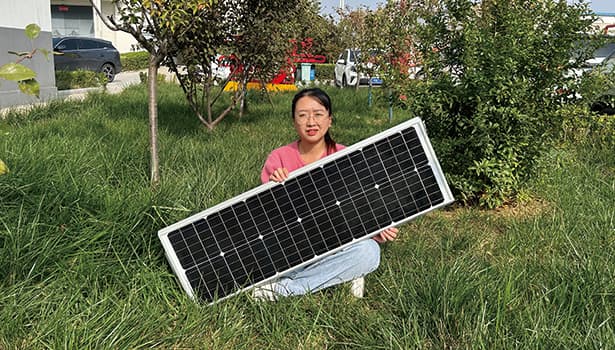
Solar Street Light Frequently Asked Questions
How to charge the solar street light properly when using it for the first time?
The first time you use a solar powered street light, you should place it in a sunny place so that the solar panel receives sufficient light. There is no need to worry too much about overcharging, as most modern solar light controllers are equipped with overcharging protection. The general charging time is 6 - 8 hours, the specific time varies depending on the lamps and lighting conditions, after fully charged can be used normally.
How long does it normally take for a solar street light to be fully charged?
In full sunlight, it takes 4 - 8 hours to fully charge an ordinary solar light. However, if the light is not enough, the solar panel power is small or the battery capacity is large, the charging time will be extended and may take 10 hours or even longer.
What is the life span of a solar street light?
The service life of solar led street lights is affected by many factors. The normal service life of solar panels is about 10 - 15 years, and the service life of batteries is 2 - 5 years (2 - 3 years for lead-acid batteries, 3 - 5 years for lithium batteries). Reasonable use and maintenance can prolong their service life, such as regular cleaning of solar panels, avoiding over-discharge of batteries, and so on.
How to maintain the solar powered street light to prolong its service life?
Regularly clean the solar panel and the surface of the lamp to keep it clean. Avoid external impacts on the solar light. In winter or cold areas, pay attention to keep the battery warm to prevent the battery performance from decreasing. When not in use for a long time, charge and discharge the solar light every once in a while to keep the battery active.
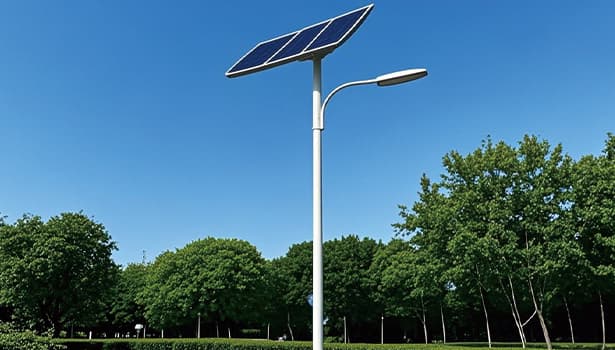
Conclusion
The problem of poor charging of solar street lights is caused by a variety of factors, through the correct inspection method, analyze the causes and take targeted solutions, can effectively solve the problem. In daily use, do a good job of maintenance, can ensure the normal operation of solar LED street lights, give full play to its environmental protection, energy saving advantages. If you encounter complex problems, it is recommended to seek professional help. We hope that this article can provide strong support for you to solve the solar powered street light charging problem, so that the solar street light continues to illuminate the road of our life.

